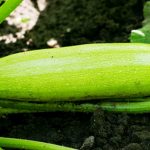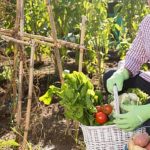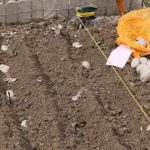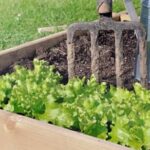Intensive gardening is a method of maximizing the productivity of your garden by carefully planning and utilizing every square foot of space to yield the maximum pounds of vegetables. By using this method, you can achieve higher yields in a smaller area and efficiently use the available space. The goal is to make the most of your gardening space by optimizing the square foot per pounds of vegetables.
The benefits of intensive gardening are numerous. Not only does it result in higher yields, but it also allows for efficient use of space, making it perfect for urban or limited-space gardens. This form of gardening maximizes productivity while minimizing effort, making it an attractive option for many gardeners.
As we dive into topics such as planning your intensive gardening space, soil preparation and best practices, planting methods, care and maintenance, harvesting and yield estimation, success stories and case studies, you will gain valuable insights into how to make the most out of your garden. Whether you are new to gardening or have years of experience, implementing some intensive gardening techniques can significantly impact your vegetable production and overall gardening experience.
Planning Your Intensive Gardening Space
Intensive gardening is a method of maximizing the productivity of a given space by careful planning and efficient use of resources. One of the key aspects of intensive gardening is maximizing the square foot per pounds of vegetables, which essentially means getting the highest possible yield from a specified area. This can be achieved through strategic planning, proper soil preparation, and selecting the right planting methods.
When planning your intensive gardening space, it is important to first assess and measure the available area in square feet. This will give you a clear idea of how much space you have to work with and how many vegetables you can realistically grow. Keep in mind that some vegetables require more space than others to thrive, so it’s essential to choose plants that are suitable for your available area and that will provide a high yield.
In addition to measuring your gardening space, consider factors like sunlight exposure, water availability, and soil quality. These elements will influence what types of vegetables are best suited for your garden and how successful they will be. By carefully planning and considering all these factors, you can optimize your intensive gardening space for maximum productivity.
| Aspect | Consideration |
|---|---|
| Square footage | Assessing available area for gardening |
| Vegetable selection | Choosing plants suitable for available space and high yield |
| Environmental factors | Sunlight, water, and soil quality considerations |
Soil Preparation and Best Practices
Intensive gardening is a method of growing vegetables and fruits in a small space efficiently. The key to successful intensive gardening is maximizing the use of each square foot to yield the highest pounds of vegetables possible. One crucial aspect of achieving this goal is through proper soil preparation and best practices.
Importance of Soil Quality
The quality of the soil in an intensive garden directly impacts the yield of vegetables. High-quality, nutrient-rich soil is essential for plants to grow and produce healthy, abundant harvests. Before starting an intensive garden, it is important to assess the condition of the soil and make any necessary improvements to ensure optimal growing conditions.
Tips for Preparing the Soil
To prepare the soil for maximum productivity in an intensive garden, it is important to incorporate organic matter such as compost, manure, or other organic fertilizers into the soil. This will improve its structure, fertility, and overall health. Additionally, pH levels should be tested and adjusted as needed to create an ideal environment for plant growth.
Furthermore, practicing no-till or reduced tillage methods can help maintain soil structure and preserve valuable nutrients. Mulching the soil can also help retain moisture and suppress weeds, promoting healthier plant growth while reducing maintenance needs.
Best Practices for Maintaining Soil Health
In order to support high vegetable yields in an intensive garden, it is important to maintain the health of the soil throughout the growing season. This includes regular monitoring of soil moisture levels and addressing any deficiencies through timely watering practices. Additionally, rotating crops from season to season can help prevent depletion of specific nutrients in the soil while minimizing disease and pest issues.
By implementing these best practices for soil preparation and maintenance in intensive gardening, individuals can create an ideal environment for maximizing their square foot per pounds of vegetables harvested. Ultimately, healthy and fertile soil provides a solid foundation for achieving bountiful yields in an intensive gardening setup.
Planting Methods for Intensive Gardening
Intensive gardening relies on maximizing the use of space to achieve high vegetable yields. When it comes to planting methods for intensive gardening, there are several techniques that can help gardeners make the most of their space and increase productivity.
One such method is square foot gardening, which involves dividing the gardening area into small square sections and planting a different crop in each square. This method helps maximize the use of space and can result in a higher yield compared to traditional row planting.
Another effective planting method for intensive gardening is companion planting. This involves growing different types of plants together that complement each other in some way, such as repelling pests or providing mutual benefits. For example, planting marigolds alongside tomatoes can help deter pests and improve tomato growth.
In addition, intercropping, which involves growing two or more crops together in the same space, can also be beneficial for intensive gardening. This technique allows gardeners to make efficient use of space and resources while increasing overall yield.
Succession planting is another important technique for maximizing yield in an intensive garden. By staggering plantings throughout the growing season, gardeners can ensure a continuous harvest and avoid wasting valuable space. For example, after harvesting an early crop like lettuce, another fast-growing crop like radishes can be planted in its place. This approach optimizes square foot per pounds of vegetables and ensures a steady supply of fresh produce.
In summary, adopting the right planting methods is crucial for successful intensive gardening and achieving high vegetable yields. Techniques such as square foot gardening, companion planting, intercropping, and succession planting are all valuable tools for maximizing space and productivity in an intensive garden.
| Planting Method | Description |
|---|---|
| Square Foot Gardening | Dividing gardening area into small squares to maximize space |
| Companion Planting | Growing different types of plants together that complement each other |
| Intercropping | Growing two or more crops together in the same space |
| Succession Planting | Staggering plantings throughout the growing season for continuous harvest |
Care and Maintenance of Intensive Garden
Intensive gardening requires careful and regular maintenance to ensure high productivity and healthy vegetable plants. In this section, we will explore the importance of care and maintenance in intensive gardening, including watering, fertilizing, and pest control practices.
Importance of Regular Care and Maintenance
In intensive gardening, the close planting of vegetables means that they are competing for nutrients, water, and space. Therefore, it is crucial to provide regular care and maintenance to support the high productivity of the plants. By staying on top of tasks such as watering, fertilizing, and pest control, gardeners can prevent common problems that can impact yield.
Watering, Fertilizing, and Pest Control Practices
Proper watering is essential in intensive gardening to ensure that each plant receives adequate moisture. Drip irrigation systems or soaker hoses can be effective in delivering water directly to the roots while minimizing water wastage. Fertilizing is also important in providing the necessary nutrients for plant growth. Organic fertilizers or compost can be used to enrich the soil without using synthetic chemicals.
Pest control is another crucial aspect of care and maintenance in intensive gardening. Close planting can create an environment conducive to pests and diseases; therefore, regular monitoring and appropriate pest management strategies are essential for maintaining healthy plants.
Tips for Managing Common Gardening Problems
Common gardening problems such as weeds, diseases, and pests can impact the productivity of an intensive garden. Implementing preventive measures such as mulching to suppress weeds or rotating crops to reduce disease pressure can help manage these issues effectively. By being proactive in identifying and addressing problems early on, gardeners can maintain a thriving intensive garden with high yields.
Intensive gardening square foot per pounds of vegetables is greatly impacted by proper care and maintenance practices. By prioritizing regular watering, fertilization, pest control,and overall vigilance over their gardens’ health,intensive gardeners stand a greater chance at reaping a larger harvest from their limited space.
Harvesting and Yield Estimation
Intensive gardening is a method of maximizing vegetable production in limited space, and it is essential to understand the concept of square foot per pounds of vegetables for effective yield estimation. By utilizing this method, gardeners can estimate the amount of produce they can expect from their garden based on the square footage. This allows for better planning and management of resources, ultimately leading to a more productive and efficient gardening experience.
When estimating yields in an intensive garden, it is crucial to consider the spacing requirements of each vegetable variety. Some plants may require more space to grow and produce a higher yield, while others can be planted more closely together. Understanding the specific needs of each vegetable will help in determining the optimal layout and placement within the garden for maximum productivity.
One popular method for estimating yields in intensive gardening is using the square foot gardening technique. This approach involves dividing the garden into individual square feet and planting different crops within each square foot based on their spacing requirements. By doing so, gardeners can easily calculate the expected yield for each crop based on the number of plants accommodated within each square foot.
In addition to understanding the concept of square foot per pounds of vegetables, it is important to factor in other variables such as environmental conditions, maintenance practices, and pest control measures when estimating yields in an intensive garden. These factors can all have a significant impact on overall productivity and should be considered when planning and managing an intensive garden for maximum efficiency.
Success Stories and Case Studies
Intensive gardening has become a popular method for many home gardeners due to its efficiency and high yields. With the goal of maximizing square foot per pounds of vegetables, intensive gardening focuses on planting in a concentrated space while still producing a significant harvest. This section will explore some success stories and case studies that showcase the impact of intensive gardening on vegetable production.
Success Stories:
- Avid gardener, Sarah, transformed her small backyard into a productive intensive garden, growing a variety of vegetables such as tomatoes, peppers, and lettuce. Through careful planning and soil preparation, she was able to maximize her square foot per pounds of vegetables, leading to an impressive harvest at the end of each season.
- John and Maria, a couple living in an urban apartment with limited outdoor space, utilized vertical gardening techniques to create an intensive garden on their balcony. By growing climbing vegetables like beans and cucumbers alongside compact varieties such as herbs and microgreens, they were able to achieve a remarkable yield relative to their small gardening area.
Case Studies:
- The University’s Agricultural Research Center conducted a study comparing traditional gardening methods with intensive gardening practices. The results showed that the intensive garden plot produced double the amount of vegetables per square foot compared to the traditional plot, demonstrating the effectiveness of this method in maximizing yields.
- In another case study in a community garden setting, participants were able to collectively produce over 500 pounds of vegetables within a space that would typically yield much less using conventional gardening methods. The success of this project encouraged more members to adopt intensive gardening approaches in their own plots.
These success stories and case studies illustrate how intensive gardening can significantly impact vegetable production by maximizing the use of available space without compromising on yield. As more individuals experience positive outcomes with this method, it serves as inspiration for others who are interested in starting their own intensive gardens.
Conclusion and Final Thoughts
In conclusion, intensive gardening offers numerous benefits, including higher yields and efficient use of space. By maximizing square foot per pounds of vegetables, gardeners can make the most out of their available space and resources.
Through careful planning, soil preparation, planting methods, and maintenance practices, it is possible to achieve a productive and sustainable intensive garden. As demonstrated by success stories and case studies, intensive gardening has the potential to significantly impact vegetable production and provide a more sustainable way of growing food.
For individuals interested in starting their own intensive garden, it is important to remember the significance of soil quality and careful planning. Choosing the right vegetables based on space and yield potential is crucial for a successful intensive garden.
Additionally, regular care and maintenance practices such as watering, fertilizing, and pest control are essential for achieving high productivity. By embracing intensive gardening techniques, individuals can not only enjoy a bountiful harvest but also contribute to a more sustainable approach to vegetable cultivation.
In essence, intensive gardening provides an opportunity for individuals to maximize their vegetable yields within limited space. With the right knowledge and practices in place, it is possible to create a productive and sustainable garden that supports the concept of square foot per pounds of vegetables.
As more people embrace the principles of intensive gardening, there is a greater potential for increased vegetable production on a smaller scale – ultimately contributing to a more environmentally-friendly and resource-efficient approach to growing food.
Frequently Asked Questions
How Many Pounds of Vegetables Per Square Foot?
The amount of pounds of vegetables per square foot can vary depending on the specific vegetable being grown. Generally, a well-maintained and properly fertilized square foot garden can yield 8-10 pounds of vegetables per square foot.
What Is the Spacing for Vegetables in a Square Foot Garden?
In square foot gardening, the spacing for vegetables is typically determined by the mature size of the plant. For example, larger plants like tomatoes or peppers may require one plant per square foot, while smaller plants like lettuce or carrots can be planted in groups of 4, 9, or even 16 per square foot.
What Is the Ratio for Square Foot Gardening?
The ratio for square foot gardening is based on dividing a garden bed into one-foot squares and growing different crops within each square based on plant spacing recommendations. This method maximizes space and promotes intensive planting to increase yields in a small area.

If you’re looking to get into vegetable gardening, or are just looking for some tips on how to make your current garden better, then you’ve come to the right place! My name is Ethel and I have been gardening for years. In this blog, I’m going to share with you some of my best tips on how to create a successful vegetable garden.





